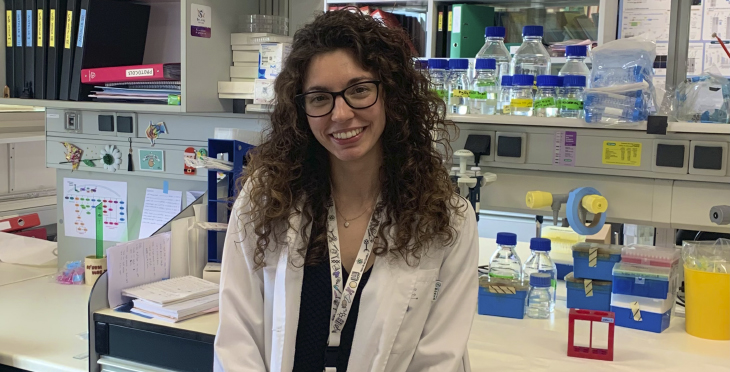Mechanisms that control the quantity and quality of ribosomes in proliferating cells

Natalia Fernández Parejo
Centro de Investigación del Cáncer, Salamanca
Eukaryotic ribosomes contain four rRNAs and ~80 proteins that are assembled in two subunits of unequal sizes, the 40S and 60S subunits. The formation of the two subunits starts with the synthesis by RNA polymerase I of a pre-rRNA transcript, and is followed by the formation of the initial 40S and 60S pre-ribosomes. Those complexes then enter two separate multi-step maturation pathways that happen in the nucleolus, nucleoplasm and cytoplasm. The whole process of ribosome formation is assisted by more than 200 ribosome biogenesis factors (RBFs) that mediate the modification, folding and processing of rRNA precursors, and the incorporation of ribosomal proteins. Because ribosome synthesis is hyperactivated in many cancers there is much interest in understanding how transformed cells deregulate this process. One aspect to ascertain is which signaling pathways activate ribosome synthesis in different cell contexts. Another important aspect is to unveil all the events within the human ribosome synthesis pathway that are subject to regulation. In our laboratory, we have addressed those two aspects in two separate projects. The first project focused on the study of a VAV2-mediated signaling pathway that activates ribosome production in human keratinocytes. We have dissected the elements that participate in the pathway, identify the step of ribosome synthesis that is activated, and provide evidence of its deregulation and amenability to inhibition in squamous cell carcinoma. The second project was devoted to the characterization of a set of so-far undescribed intermediates of 40S subunit maturation in human cells. We have defined in which steps of the 40S pathway they intervene, identify a group of RBFs associated to them, and perform loss-of-function analyses to characterize their functions. Our results reveal a process that exhibits regulatory features and is required for proper production of 40S ribosomal subunits.

